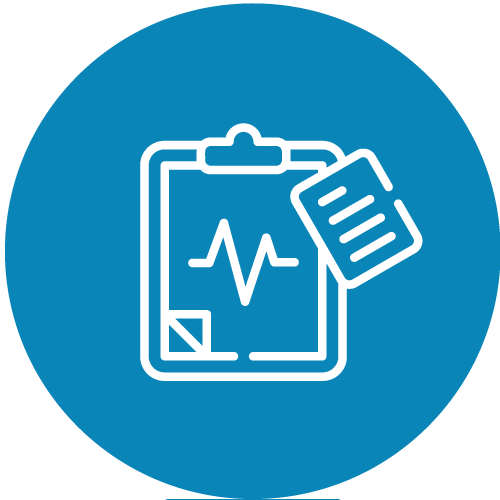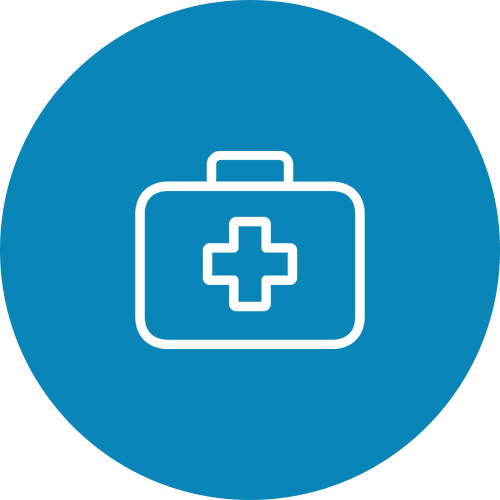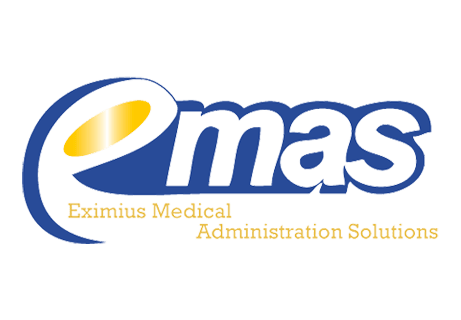

24 Hour Clinic in Alam Damai, Cheras
Welcome to Klinik Azurose
For immediate medical attention or advice outside of standard hours, visit our 24-Hour Clinic in Cheras – your reliable partner in health, anytime.
- Open Everyday, 24 Hours
- 130(GF) & 132(GF) Jalan Damai Raya 2 Alam Damai, 56000 Cheras, Kuala Lumpur
- 011-62530334
- 03-89587868
Your Quality Family Healthcare Begins Here
At Klinik Azurose, we strive to take care of you through thorough checkups and consultations. We want to be part of your life journey, and somewhere you can count on for medical and health advice for you and your loved ones in Cheras. Our services range from general consultation to pregnancy screenings. We treat everybody with respect and without judgement. Schedule an appointment, or contact us if you have questions or concerns.

Adult & Primary Care
We are the go-to quality family care clinic in Cheras when it comes to preventative care, consultation, and regular screenings or checkups. Take a look at what we offer for our Adult & Primary Care services.
Learn More →

Women's Health & Pregnancy
Monitor your pregnancy progress through regular screenings and ultrasounds. We also offer women health screening services. Take a look at what we offer for our Women's Health & Pregnancy services.
Learn More →

Infant & Child Health
Our pediatric care services ranges from one-time such as sick visits or baby girl sunat, to constant monitoring of your children's wellbeing. Take a look at what we offer for our Infant & Child Health services.
Learn More →

Company & On-Site Visits
Are you an employer cares for the wellbeing of your employees? We do in-office screenings and checkups now. Contact us to enquire more!
Enquire Now →

SME & Corporate Panel
We are always open to good partnerships that can benefit our patients. Are you interested in being one of our healthcare panels? Reach out to us today.
Enquire Now →
Our Alam Damai Patient's Reviews
Trustindex verifies that the original source of the review is Google. Doc yg baik dan lemah lembut. Parents yakin dan senang hati dengan penjelasan Doc..terima kasih!Trustindex verifies that the original source of the review is Google. Service terbaik,semua ok..memang puas hatiTrustindex verifies that the original source of the review is Google. Tadi sy pergi klinik bawa isteri scan.. sekali gus buka buku pink ni anak first kami. Alhamdulillah bnyak ilmu baru yang kami dapat daripada Dr. HIKMAH.. BP, Hb, apa lagi.. Bnyak nasihat dari Dr. Hikmah.. Recommend sngat sebb beliau pakar dgn kerja.. dengar Dr sebut pernah berkhidmat Klinik ibu dan anak.. 🥰🥰 Harap boleh bertemu dgn Dr. Hikmah lagi untuk next appointment.. Klinik tenang dan cantik..Trustindex verifies that the original source of the review is Google. The best clinic ever. My first time here. They helped me removed my AIUD. Doctor Aireen and nurses was very friendly, polite, humble and honest. I never been in a clinic where the doctor really shared good information honestly. Terima kasih membantu saya, saya doakan semoga urusan doctor dan nurses semua dipermudahkan, dan dilimpahkan rezeki yang berkat sentiasa. ❤❤Trustindex verifies that the original source of the review is Google. thanks Dr Farhana ! my fav dr all time @ azurose clinic. I prefer to visit the clinic when Dr. Farhana is on duty, as I feel more comfortable with her.Trustindex verifies that the original source of the review is Google. klinik paling best! Highly recommended. Staff and dr farhana sangat baik.

Klinik Wanita di Cheras, KL
Your Trusted Women's Health Clinic
Choosing a healthcare provider can feel overwhelming, especially when it comes to women’s health. At our 24 hour women’s clinic, we understand that your needs are unique. We’re dedicated to creating a safe, comfortable space where women and mothers of all ages and backgrounds feel heard, respected, and empowered to take control of their health.
Led by Dr. Farhana Abdul Aziz, we’re dedicated to provide the quality and comprehensive services. Whether you’re a teenager navigating puberty or someone approaching menopause, we’re here to support you on your unique health journey.
We’re Open 24 Hours Everyday
We recently expanded our operating hours. You can have access to trusted healthcare professionals whenever you need it most – day or night, weekdays, weekends, and public holidays.
Our dedicated 24 hour clinic is equipped to handle a wide range of urgent medical needs and general consultations outside of regular clinic hours. A sudden fever, an unexpected injury, or you simply require medical advice when other clinics are closed, our team is here to provide prompt and compassionate care.
Why Choose Our Clinic in Alam Damai?
Quality service at an affordable price
We are cost-transparent and provide quality service without unnecessary additional charges.
Relaxing & Clean Environment
Our friendly staff and clean facilities in Cheras ensure you are comfortable throughout your visit at Azurose.
Child & Family Friendly
Children and families are welcome to our clinic in Alam Damai. It is our passion to quality care to all walks of life.
Walk-in & by appointment available
We understand health concerns can be an emergency at times. Hence, we accept walk-in visits. If you would like to reduce wait time, please feel free to schedule an appointment.
Our Panels








Serving Our Community as a 24 Hour Clinic
About Alam Damai
Alam Damai is a vibrant neighborhood located in Cheras, Kuala Lumpur, Malaysia. It offers a mix of residential, commercial, and recreational areas, making it an attractive place to live and visit.
Situated in the heart of Cheras, Alam Damai provides convenient access to various amenities and facilities. Alam Damai is well-connected to other parts of Kuala Lumpur through major roads and highways, such as the East-West Link Expressway and the Middle Ring Road 2 (MRR2).
This way, our 24-hour clinic is reachable for all our patients.
Locate Our 24-Hour Clinic
Driving to Klinik Azurose
Start by heading east toward Jalan Damai Bakti for 15 meters. You’ll want to turn right onto Lingkungan Alam Damai and continue for 260 meters. Then turn left onto Persiaran Alam Damai and drive for 160 meters. Turn left onto Jalan Alam Damai then another left toward Jalan Damai Raya 2. Finally, turn right to stay on Jalan Damai Raya 2. Klinik Azurose will be on your left.
